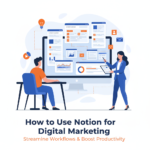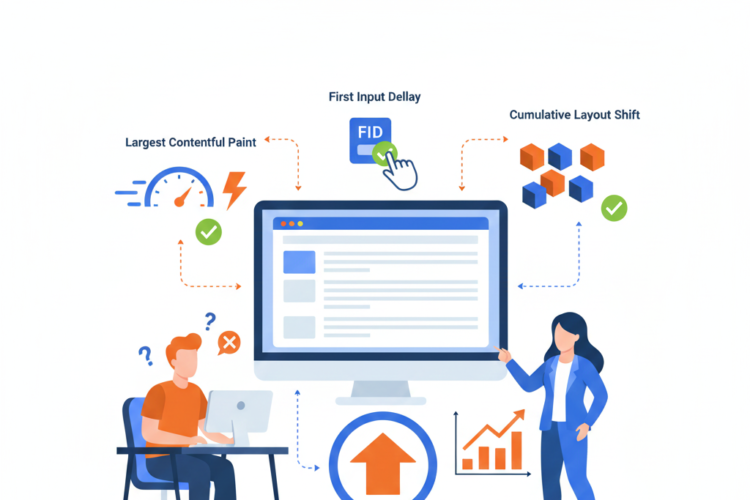
How to Optimize Images for SEO Without Losing Quality
Introduction
Images play a crucial role in enhancing user experience, increasing engagement, and making content visually appealing. However, if not optimized properly, images can slow down page loading speed and negatively impact SEO rankings. Optimizing images for SEO while maintaining their quality ensures better performance, faster loading times, and improved visibility in search results.
In this comprehensive guide, we will cover everything you need to know about image optimization, from choosing the right formats and compression techniques to implementing best SEO practices without sacrificing quality.
Why Image Optimization Matters for SEO
1. Improves Page Load Speed
Slow-loading pages frustrate users and increase bounce rates. Optimized images reduce page load time, leading to better user experience and improved SEO rankings.
2. Enhances User Experience
High-quality images that load quickly keep visitors engaged, reduce bounce rates, and improve overall website usability.
3. Increases Search Visibility
Google Image Search is a significant source of organic traffic. Properly optimized images can rank in search results, bringing more visitors to your site.
4. Reduces Server Load & Bandwidth Usage
Efficient image compression reduces the amount of data that needs to be loaded, reducing server strain and lowering hosting costs.
5. Boosts Mobile Performance
With Google’s mobile-first indexing, having optimized images ensures better performance on mobile devices, improving SEO rankings.
Choosing the Right Image Format
Selecting the right image format is crucial for balancing quality and file size. Here are the best formats for different use cases:
1. JPEG (JPG)
Best for: Photographs and complex images with many colors.
Pros: Good quality with lossy compression, small file sizes.
Cons: Loses some image data when compressed.
2. PNG
Best for: Images with transparency and simple graphics.
Pros: Lossless compression (maintains quality), supports transparency.
Cons: Larger file size than JPEG.
3. WebP
Best for: Web images where both quality and size matter.
Pros: 25-35% smaller than JPEG and PNG while maintaining high quality.
Cons: Not fully supported in all browsers.
4. SVG
Best for: Logos, icons, and vector graphics.
Pros: Scalable without losing quality, small file sizes.
Cons: Not suitable for photographs.
5. AVIF
Best for: High-quality web images with small file sizes.
Pros: Superior compression, better quality than WebP and JPEG.
Cons: Limited browser support.
Image Compression Techniques
Compressing images reduces file size without significantly impacting quality. Here are the best methods:
1. Lossy Compression
Reduces file size by discarding some image data.
Best for: Web graphics and non-critical images.
Tools: TinyJPG, JPEG-Optimizer, Photoshop’s “Save for Web” feature.
2. Lossless Compression
Maintains image quality while reducing file size.
Best for: High-detail images where quality matters.
Tools: PNGGauntlet, OptiPNG, ImageOptim.
3. Adaptive Compression
Uses AI and machine learning to optimize images dynamically.
Best for: Large-scale websites with many images.
Tools: Cloudinary, Kraken.io, ShortPixel.
Image Resizing and Scaling
1. Use Proper Dimensions
Uploading oversized images slows down loading times. Resize images to match display requirements using:
Photoshop
GIMP
Canva
2. Responsive Images
Ensure images scale according to the device using:
<img src="image.jpg" srcset="image-small.jpg 480w, image-medium.jpg 1024w, image-large.jpg 1920w" sizes="(max-width: 600px) 480px, 1024px">3. Use CSS for Scaling
img {
max-width: 100%;
height: auto;
}Best Practices for Image SEO
1. Optimize File Names
Use descriptive, keyword-rich filenames instead of generic names like “IMG_1234.jpg.”
Example:
red-running-shoes.jpginstead ofimage1.jpg.
2. Use ALT Text for Accessibility and SEO
ALT text helps visually impaired users and improves SEO by providing image context.
Example:
<img src="red-shoes.jpg" alt="Red running shoes for marathon training">3. Leverage Structured Data for Images
Use schema markup to enhance image search visibility.
Example:
<script type="application/ld+json">
{
"@context": "https://schema.org/",
"@type": "ImageObject",
"contentUrl": "https://example.com/image.jpg",
"name": "Red Running Shoes",
"author": "Brand Name",
"datePublished": "2024-01-01"
}
</script>4. Enable Lazy Loading
Lazy loading defers image loading until needed, improving page speed.
Example:
<img src="image.jpg" loading="lazy" alt="Optimized image">5. Use Image Sitemaps
Add images to your sitemap to help search engines index them.
Example:
<url>
<loc>https://example.com/page.html</loc>
<image:image>
<image:loc>https://example.com/images/image.jpg</image:loc>
<image:title>Optimized Image for SEO</image:title>
</image:image>
</url>6. Use a CDN for Faster Delivery
A Content Delivery Network (CDN) improves image load speed worldwide.
Examples: Cloudflare, Amazon CloudFront, KeyCDN.
Testing and Monitoring Image Performance
1. Test Page Speed with Google PageSpeed Insights
Provides recommendations for improving image loading speed.
2. Check Image Compression with GTmetrix
Analyzes image file sizes and suggests optimizations.
3. Monitor Image Traffic in Google Search Console
Helps track which images are ranking and driving traffic.
4. Use Chrome DevTools for Image Analysis
Right-click on a webpage → Inspect → Network tab → Check image loading times.
Conclusion
Optimizing images for SEO without losing quality requires a strategic approach that balances compression, format selection, and proper implementation of best practices. By following the steps outlined in this guide, you can enhance user experience, improve search visibility, and boost website performance.
Key Takeaways:
Choose the right image format (JPEG, PNG, WebP, AVIF, SVG) based on use case.
Compress images using lossy or lossless methods.
Resize images and use responsive techniques.
Implement SEO best practices like ALT text, structured data, and lazy loading.
Use CDNs and monitor performance with Google PageSpeed Insights.
By applying these optimization techniques, you can ensure your website remains fast, user-friendly, and SEO-optimized, leading to better engagement and higher search rankings.
Author



